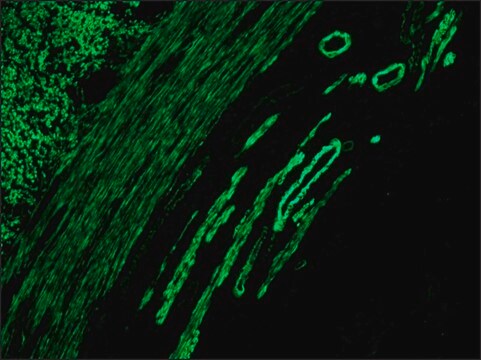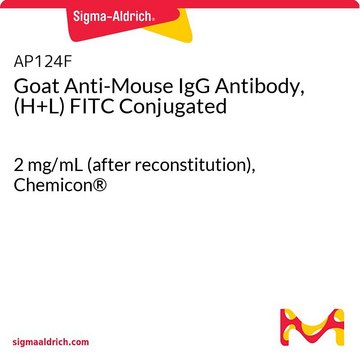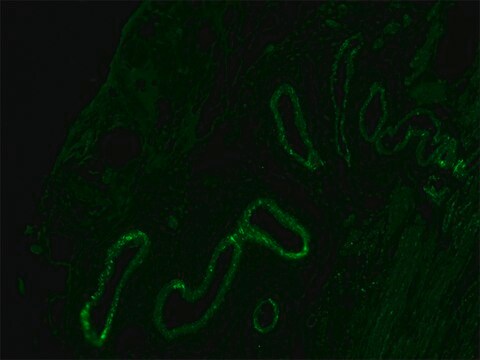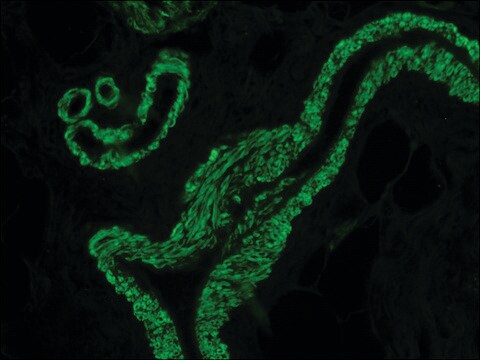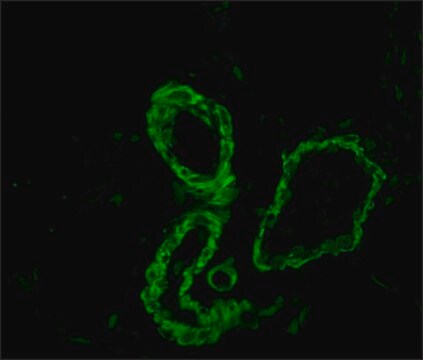F0257
Anti-Mouse IgG (whole molecule)–FITC antibody produced in goat
affinity isolated antibody, buffered aqueous solution
Synonym(s):
Anti-Mouse Fitc, Anti-Mouse Fitc - Anti-Mouse IgG (whole molecule)–FITC antibody produced in goat
Sign Into View Organizational & Contract Pricing
All Photos(9)
About This Item
Recommended Products
biological source
goat
Quality Level
conjugate
FITC conjugate
antibody form
affinity isolated antibody
antibody product type
secondary antibodies
clone
polyclonal
form
buffered aqueous solution
technique(s)
direct immunofluorescence: 1:32
storage temp.
2-8°C
target post-translational modification
unmodified
Looking for similar products? Visit Product Comparison Guide
General description
IgG antibody subtype is the most abundant serum immunoglobulins of the immune system. It is secreted by B cells and is found in blood and extracellular fluids and provides protection from infections caused by bacteria, fungi and viruses. Maternal IgG is transferred to foetus through the placenta that is vital for immune defense of the neonate against infections. Mouse IgGs has four distinct isotypes, namely, IgG1, IgG2a, IgG2b, and IgG3.
Immunogen
Purified mouse IgG
Application
Anti-Mouse IgG (whole molecule)-FITC antibody has been used in:
- immunohistochemistry (1:200) (1:500)
- immunofluorescence (1:100)(1:500)(1:200)
- immunocytochemistry(1:1000)
Physical form
Solution in 0.01 M phosphate buffered saline, pH 7.4, containing 1% bovine serum albumin and 15 mM sodium azide.
Disclaimer
Unless otherwise stated in our catalog or other company documentation accompanying the product(s), our products are intended for research use only and are not to be used for any other purpose, which includes but is not limited to, unauthorized commercial uses, in vitro diagnostic uses, ex vivo or in vivo therapeutic uses or any type of consumption or application to humans or animals.
Not finding the right product?
Try our Product Selector Tool.
Storage Class Code
10 - Combustible liquids
WGK
WGK 2
Flash Point(F)
Not applicable
Flash Point(C)
Not applicable
Choose from one of the most recent versions:
Already Own This Product?
Find documentation for the products that you have recently purchased in the Document Library.
Customers Also Viewed
Amanda K Silva et al.
Molecular vision, 16, 36-45 (2010-01-14)
Cancer stem cells are found in many tumor types and are believed to lead to regrowth of tumor mass due to their chemoresistance and self-renewal capacity. We previously demonstrated small subpopulations of cells in retinoblastoma tissue and cell lines that
Specific heat shock proteins protect microtubules during simulated ischemia in cardiac myocytes
Bluhm, W., F., et al.
American Journal of Physiology. Heart and Circulatory Physiology, 275(6), H2243-H2249 (1998)
Susana M Garcia et al.
Genes & development, 21(22), 3006-3016 (2007-11-17)
Protein homeostasis maintains proper intracellular balance by promoting protein folding and clearance mechanisms while minimizing the stress caused by the accumulation of misfolded and damaged proteins. Chronic expression of aggregation-prone proteins is deleterious to the cell and has been linked
Maruthachalam Ravi et al.
PLoS genetics, 7(6), e1002121-e1002121 (2011-06-23)
Centromere behavior is specialized in meiosis I, so that sister chromatids of homologous chromosomes are pulled toward the same side of the spindle (through kinetochore mono-orientation) and chromosome number is reduced. Factors required for mono-orientation have been identified in yeast.
Siu-Kei Chow et al.
ASN neuro, 2(1), e00026-e00026 (2009-12-17)
The contribution of astrocytes to the pathophysiology of AD (Alzheimer's disease) and the molecular and signalling mechanisms that potentially underlie them are still very poorly understood. However, there is mounting evidence that calcium dysregulation in astrocytes may be playing a
Our team of scientists has experience in all areas of research including Life Science, Material Science, Chemical Synthesis, Chromatography, Analytical and many others.
Contact Technical Service


